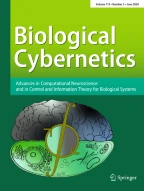Abstract.
Theta phase precession in rat hippocampal place cells is hypothesized to contribute to memory encoding of running experience in the sense that it provides the ideal timing for synaptic plasticity and enables the asymmetric associative connections under the Hebbian learning rule with asymmetric time window (Yamaguchi 2003). When the sequence of place fields is considered as the episodic memory of running experience, a given spatial route should be accurately stored in spite of differing overlap extent among place fields and varying running velocity. Using a hippocampal network model with phase precession and the Hebbian learning rule with asymmetric time window, we investigate the memory encoding of place field sequences in a single traversal experience. Computer experiments show that place fields cannot be stored correctly until an input-dependent feature is introduced into the learning rule. These experiments further indicate that there exists an optimum value for the saturation level of synaptic plasticity and the speed of synaptic plasticity in the learning rule, which are correlated with, respectively, the overlap extent of place field sequence and the running velocity of animal during traversal. A comparison of these results with biological evidences shows good agreement and suggests that behavior-dependent regulation of the learning rule is necessary for memory encoding.
Similar content being viewed by others
Author information
Authors and Affiliations
Corresponding author
Rights and permissions
About this article
Cite this article
Wu, Z., Yamaguchi, Y. Input-dependent learning rule for the memory of spatiotemporal sequences in hippocampal network with theta phase precession. Biol. Cybern. 90, 113–124 (2004). https://doi.org/10.1007/s00422-003-0454-2
Received:
Accepted:
Published:
Issue Date:
DOI: https://doi.org/10.1007/s00422-003-0454-2
